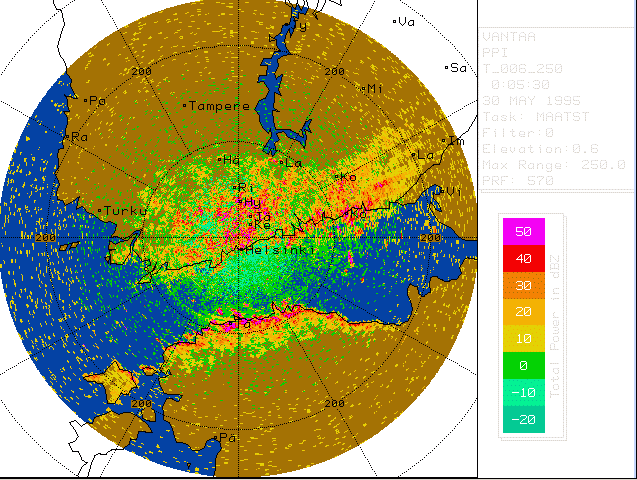Have some of the texts regarding Subrefraction and Superrefraction been mixed together in the section regarding Subrefraction? The last 6 lines starting with "The classic situation is a temperature inversion, either at the surface or aloft...", of the Subrefraction section I read/interpret as being about Superrefraction. Am I right?
I still get confused about the last subsection in the section "subrefraction", cause it seems to be about superrefraction. The word "superrefraction" is mentioned and with opposite properties than earlier desribed in the subrefraction-section. So, shouldn´t the last subsection be put into the section below regarding "superrefraction" cause those informations seems to miss there.
Another thing, I have troubles understanding why subrefraction underestimate echo height and why superrefraction overestimate echo height. I thought it would be just opposite. I think like this: When subrefraction, then the radar beem is bend upwards and detect signal from higher elevation than expected for standard refraction. Signal from higher elevation, isn´t that overestimation of echo height? Hope someone can explain to me, if I am thinking wrong.
Re: Topic: Radar Beam - Anomlous Propagation
I think it is correct that subrefraction underestimate echo height. When we get subrefraction the radar beam is bent upwards, so we get radar signals from an anomalous high elevation. The radar does not "register" the anomalous propagation, so as the beam is bent upwards, targets are detected at higher elevations than its "normal" propagation would be. The radar "thinks" that the target detected lies along the line where the "normal propagation" would be, even though in reality the echo lies above this level. Therefore the target echo height is underestimated by the radar. Did that make sense? I find it hard to express myself in english... :-)
... and maybe I'm wrong... :-)
Inger-Lise
Re: Topic: Radar Beam - Anomlous Propagation
Re: Topic: Radar Beam - Anomlous Propagation
I agree with your first point: the paragraph you are referring to (last of sub-refraction section) should be moved in the "super-refraction" section.
Regarding the over- and underestimation consider this extreme example.
1) You have a PPI display and you have super-refraction, like for example in case of strong temperature inversion. You get echo from the Earth surface, since the beam is bended down towards the Earth, like in the attached picture which is not filtered at all (not in operational use of course).
The result is that the echo, by PPI geometrical reasoning should be some kilometers high, since it is 100 km from the radar (conical surface). But the echo actually comes from the surface: therefore you are OVERestimating the height of the source of the echo you see in the display.
You can extend this extreme example to a more interesting and meteorological case.
2) the opposite argumentation can be done for sub-refraction: you UNDERestimate the height of the source of the echo you see in the display.
I hope this helps. I get confused myself sometimes, too.

Hi Birgitte
I just read Inger-Lise's answer to your second question as I was finishing my answer to the same. She puts it very well, but here is another way of saying the same thing...
The important thing is that the transmitted beam is either bent up (subrefraction) or down (superrefraction) relative to normal propagation. The radar system reports back that it received backscattered radiation from targets when the transmitted beam was sent out at a particular angle. In the case of subrefraction, the radar beam overshoots the target. Thus the antenna would need to be lowered. This leads to the underestimation of tops.
Similarly, if the transmitted beam is bent too much, then tops will be detected even when the antenna is pointing too high, once again relative to normal propagation. Thus, tops will be overestimated.
Hope this helps too,
Paul Ford
